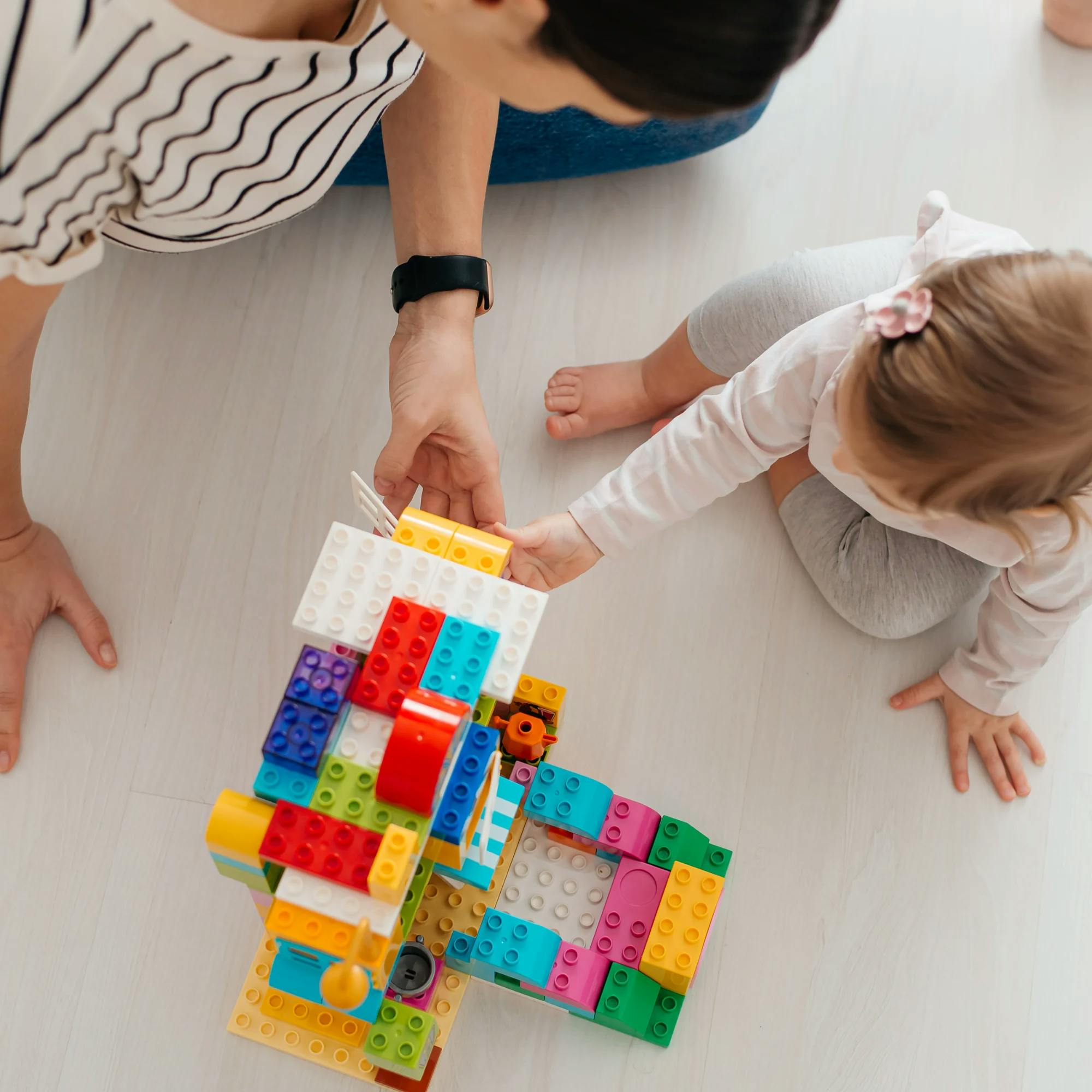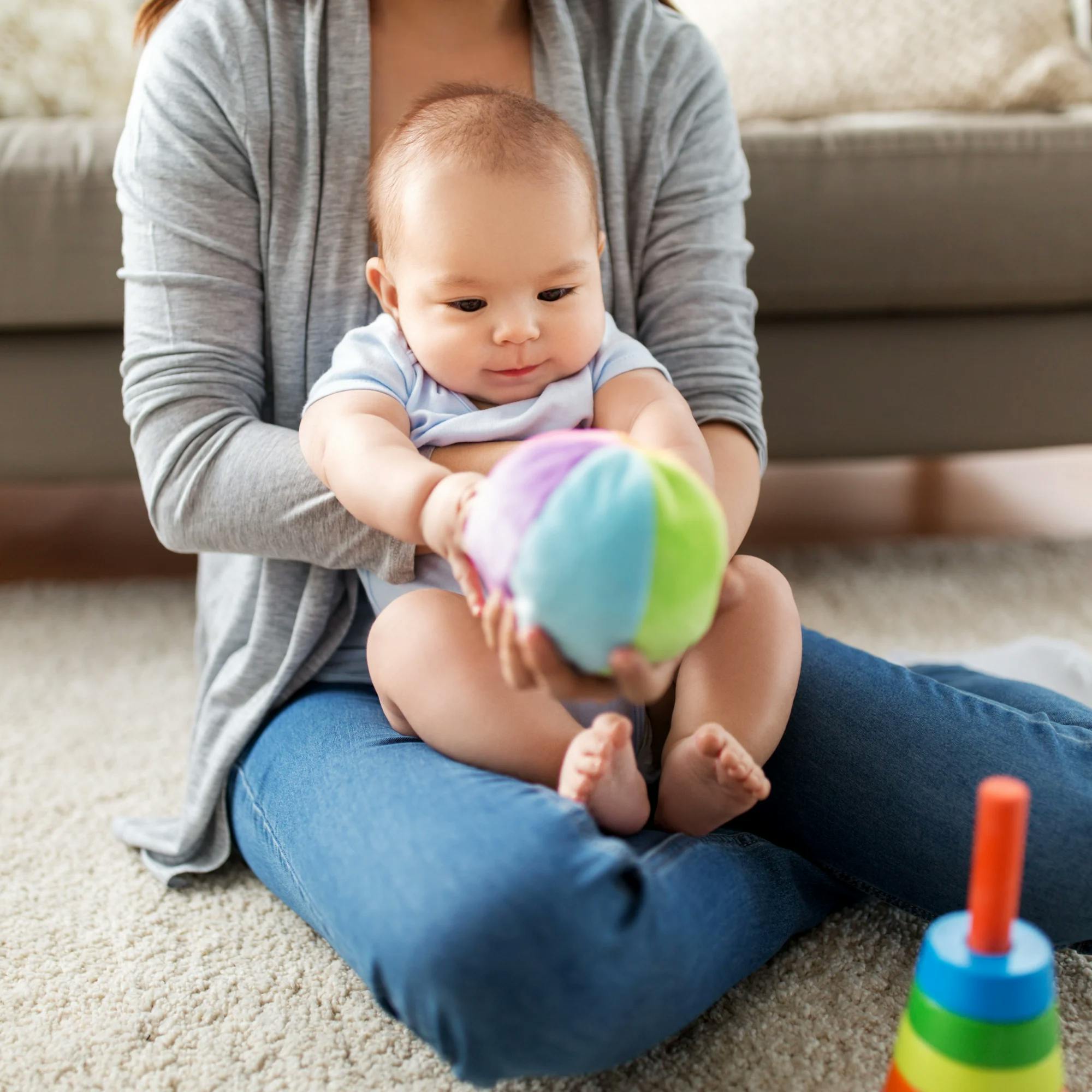
3 Ways to Tell if Your Baby Understands You
 Abby Barnes, M.S., CCC-SLP
Abby Barnes, M.S., CCC-SLP
As caregivers, we talk and talk to our babies, even though we know they can’t answer us yet. Sometimes, it may seem like everything we say is going right over their heads. But good news–although it may feel like you’re talking to yourself at times, your baby likely understands a lot more than you realize.
You’re probably wondering: “How can I tell what my baby understands if they can’t even talk?” I know it sounds a bit mysterious. But babies begin the process of learning language on the day they’re born. And while your baby can’t yet hold a conversation with you, there are ways to tell whether they understand what you’re saying. That, in turn, gives you a peek into where they are in their language development. So put on your detective hat and learn how to decipher some easy clues to your baby’s comprehension!


How can you know what your baby understands?
Generally speaking, language abilities can be separated into two categories: receptive language and expressive language. Words, phrases, signs and gestures–they’re all considered expressive language. Expressive language is any form of communication that helps us express our thoughts and needs.
Receptive language is the ability to understand what is spoken to us. There are many aspects of receptive language that have to develop before a child says their first words. By understanding these aspects and knowing what to look for, you’ll be able to determine what your child understands–and where they are in their language development! Let’s take a look at three ways you can do this.


1. Watch your baby’s reactions.
One of the simplest things you can do with your baby is to observe their reactions. You can start doing this as early as the newborn days!
Within the first three months after they’re born, you’ll want to see your baby quieting down when they hear a familiar voice, like yours. When your baby cries, do they grow a bit calmer as you talk to them? This is a sign that they’re becoming familiar with your voice and, likely, the general idea of what you’re saying. It’s true that babies don’t know the exact meanings of words this early, but they can recognize your voice and its soothing inflection, and they know you’re there to comfort them.
Try to pay attention to specific words that may calm your baby as they grow a bit older. If they’re hungry and crying, tell them that they’re about to eat or that you are making their bottle. Watch and see how they react to key words like “eat” and “bottle.”
Babies don’t know the exact meanings of words this early, but they can recognize your voice and know you’re there to comfort them.
When my son was a baby, he would cry when he was ready to eat. His crying would slowly disappear once I told him, “It’s almost time to eat,” or “Let me get your bottle!” This allowed me to realize he was learning some simple words and associating them with mealtime.
Focus on using specific words for each of your child’s routines, such as during mealtime, bath time, and getting dressed. Repeat them often to help your baby learn the words more quickly!


2. Observe what your baby looks at and identifies.
Once a baby is around six to seven months old, they should begin looking toward familiar items or people that you name. If you say, “Where’s Dada?”, your baby should turn and look toward them.
When out at the park, if you say, “Look at the puppy!”, you may catch your child turning to get a glimpse of the dog walking by. This is a very simple (and fun!) activity you can do just about anywhere with your child.
When your baby gets a little older, around nine to 12 months, you can try this by having them hand you different items or point to pictures in books. For example, if there are a bunch of toys scattered around, you could say, “Give me the bear!” When reading a book, you could say, “Point to the car!”
Don’t forget, children are not going to learn these words without hearing the names first. They’ll need to hear you talk about these items many times before they’re able to identify them. Be sure to label items and toys as you play with them, or use the names throughout your day. This will help your baby learn exactly what these words mean!
3. Watch how your baby follows directions.
Once your baby is between nine and 12 months, give them simple directions to follow and see how they respond. This is one of the best ways to assess what they can understand!
One of the earliest directions you can tell your child is “No no!” or “Stop!” If your child pauses and looks at you, there is a very good chance they realize they should stop what they’re doing.
Many times, your child will follow your directions. But even if they understand, will they always listen when we tell them “No?” Of course not! Testing boundaries is a normal part of development. To assess their understanding, you may have to look for their brief pause–or simply watch for that expression in your child’s eye that shows you they get it (even if they’re not going to do it!).
When your toddler is closer to one year old, you can give them new directions to follow. Some examples could be:
“Let’s go!”
“Sit down.”
“Clap your hands.”
“Pick up your blanket.”
“Wave bye-bye.”
When you’re determining if your child can follow these directions, be sure to give them enough time. Speak the direction, then pause to see what your child does. You may need to say it a second or third time to really get their attention. If they’re still unable to complete the task, show them how to do it yourself.
Once your toddler is two years old, you can start working on two-step commands. These are directions such as “Pick up your jacket and bring it to me,” or “Go get your snack and sit down at the table.”
If you pay attention to your child’s comprehension skills during their first couple years, you will be amazed at how much they’re learning in such a short amount of time.


What to do if your baby isn’t meeting these milestones
If you notice that your little one isn’t able to meet these milestones by the expected ages, be sure and practice with them frequently. Daily practice is best! The more your child has the opportunity to try, the better the chance they’ll one day do it themselves.
It’s important to stay on top of language milestones, as they all build on each other. If a child is having trouble developing a specific skill in receptive language, the following skills will not develop until that one skill has. This is why it’s so important to seek early intervention if you suspect your child may be delayed.
If about a month has passed from the expected milestone timeframe, go ahead and reach out to a speech-language pathologist. You can click here to find the right speech therapist for your child at Expressable. They'll listen to your concerns and help determine if an evaluation is necessary. A speech evaluation is a formal assessment that will help the speech therapist better observe your child’s communication strengths and weaknesses.


After the evaluation, the speech-language pathologist will recommend therapy if it is needed at that time. Your speech therapist will be there to answer any questions and walk you through the process!
As your child’s caregiver, you have an amazing opportunity to use these simple techniques and get a peek into your child’s development. Doing so will help you “unlock” another level of communication and understanding with your baby! So start trying out these tips with your little one–no actual detective hat needed.
How Expressable Can Help
Concerned your child isn't reaching age-expected milestones? Looking for communication support from a professional? Expressable is a national online speech therapy practice serving children and adults. We treat all major areas of communication and feeding, offer flexible hours including evenings and weekends, and accept most major health insurance plans. We’re proud to have earned more than 3,000 5-star reviews from our clients (4.9/5 average).
Our therapy model is centered on parent and caregiver involvement. Research proves that empowering caregivers to participate in their loved one’s therapy leads to better outcomes. That’s why we combine live, 1-on-1 speech therapy with personalized education and home practice activities for faster progress.
Communication is more than words. It’s how we share how we feel and show who we are. We’re here to help you or your child do just that.












